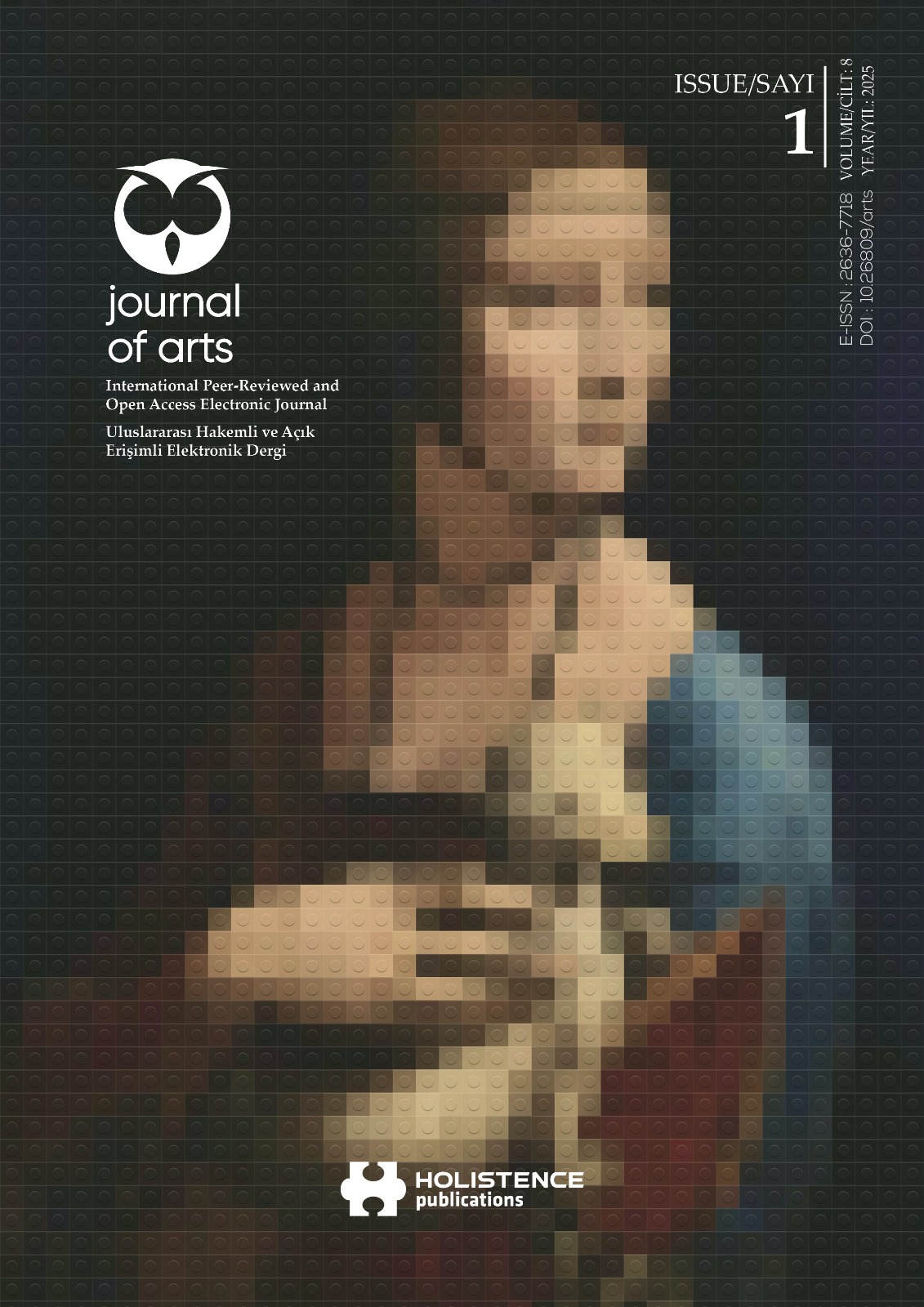The American Dream and Kitsch: Idealized lifestyles in graphic design
DOI:
https://doi.org/10.31566/arts.2657Keywords:
Kitsch Aesthetics, American Dream, Consumer Culture, Graphic DesignAbstract
This paper examines the relationship between the American Dream and kitsch aesthetics within the context of graphic design. Kitsch emerges as a form of expression in popular culture and consumer society, characterized by its aesthetically simple, accessible, and attention-grabbing visual language. The American Dream, on the other hand, is a concept built upon ideals of individual success, material prosperity, and social advancement. This study aims to analyze how the American Dream, when combined with kitsch aesthetics in graphic design, has shaped idealized lifestyles and influenced consumer culture.
In this context, the study explores the historical and aesthetic foundations of the concept of kitsch, detailing the development of kitsch design in parallel with the rise of consumer culture in 20th-century America. Furthermore, it examines the visual representations of the American Dream through 1950s American advertising imagery and the works of prominent artists such as Norman Rockwell. Through a literature review and analysis of selected works, this study reveals how the idealization of the American Dream merges with kitsch aesthetics to create a popular communication language, contributing to consumer culture. The study discusses how graphic design functions as a medium of expression at this intersection and evaluates the social and aesthetic dynamics of kitsch.
Downloads
References
ASHBY, C. (2022). Art Nouveau Art, Architecture and Design in Transformation. Bloomsbury Publishing Plc.
BOUCHER, D. (2013). The 1950s American Home. Shire Publications.
CALINESCU, M. (1987). Five Faces of Modernity. Duke University Press.
COHEN, L. (2008). A Consumers’ Republic: The Politics of Mass Consumption in Postwar America. New York: Alfred A. Knopf.
FRANK, B. (1989). Norman Rockwell’s American Family. Prospects, Crescent Books, New York.
GRAEBNER, W. (1997). Norman Rockwell and American Mass Culture: The Crisis of Representation in the Great Depression. Prospects.
GREYSER, S.A. VE BAUER, R.A. (1966). Americans and Advertising: Thirty Years of Public Opinion. The Public Opinion Quarterly, Vol. 30, No. 1 (Spring, 1966), pp. 69-78.
HEIMAN, J. (2002). 60s All-American Ads. Taschen America Llc. In Merriam-Webster Dictionary. (2024). American Dream. https://www.merriam-webster.com/dictionary//American%20dream. Erişim tarihi: 04.12.2024.
In Merriam-Webster Dictionary. (2024). Kitsch. https://www.merriam-webster.com/dictionary/kitsch. Erişim tarihi: 04.12.2024.
INNES, C. (2005). Designing Modern America: Broadway to Main Street. Yale University Press.
KULKA, T. (2002). Kitsch and Art. The Pennsylvania State University Press.
LUCIE-SMITH, E. (1984). The Thames and Hudson Dictionary of Art Terms. London, Thames and Hudson.
MARCHAND, R. (1985). Advertising the American Dream: Making Way for Modernity, 1920-1940. University of California Press.
MEGGS, P. B. (2016). A History of Graphic Design. 3rd ed. New York, John Wiley & Sons.
MEIKLE, J.L. (2005). Design in the USA. Oxford History of Art.
NALBANTOĞLU, H. Ü. (2007). “Âlem kitsch olmuş, biz n’apalım.” Adorno, kültür, sanat. Toplum ve Bilim, 110, 92.
ÖRS, M. (2017). Günümüz Toplumunda Reklam Sanat İlişkisi. Thyke Sanat ve Tasarım Dergisi, 3, s. 142-158.
ROBINSON, M. (2013). Art Deco: The Golden Age of Graphic Art & Illustration. Metro Books.
UYAN, Ö. (2024). Aubrey Vincent Beardsley’nin İllüstrasyonları ve Kontrast Kullanımı. Grafik Çalışmaları, Afyonkarahisar: Yaz Yayınları. E-ISBN: 978-625-6104-33-4.
YARDIMCI, İ. (2001). Sanatta Kitsch Kavramı. Anadolu Sanat Dergisi, 28, s. 163-168
Additional Files
Published
How to Cite
Issue
Section
License
Copyright (c) 2025 Holistence Publications

This work is licensed under a Creative Commons Attribution 4.0 International License.
When the article is accepted for publication in the Journal of Arts, authors transfer all copyright in the article to the Rating Academy Ar-Ge Yazılım Yayıncılık Eğitim Danışmanlık ve Organizasyon Ticaret Ltd. Şti.The authors reserve all proprietary right other than copyright, such as patent rights.
Everyone who is listed as an author in this article should have made a substantial, direct, intellectual contribution to the work and should take public responsibility for it.
This paper contains works that have not previously published or not under consideration for publication in other journals.










